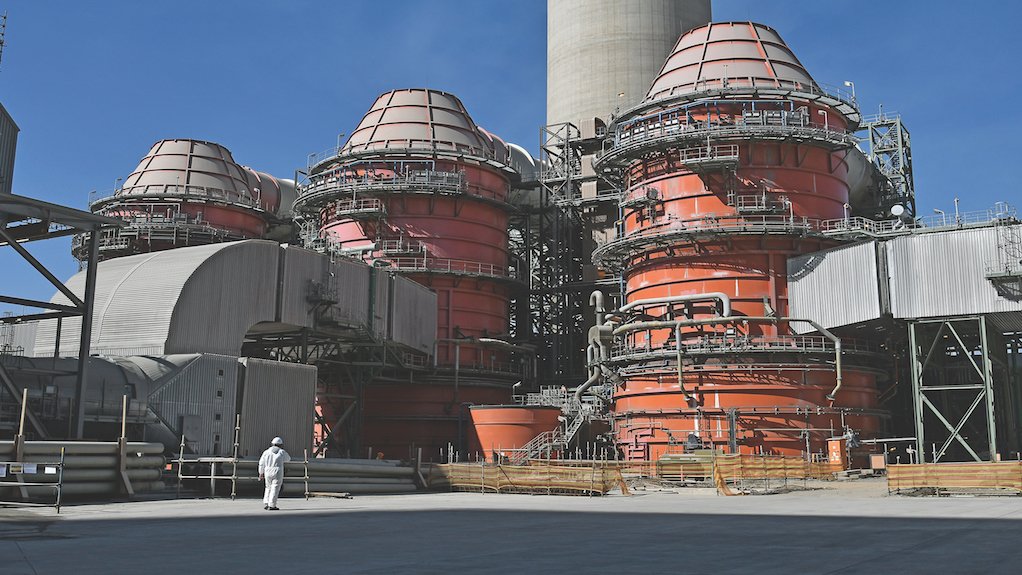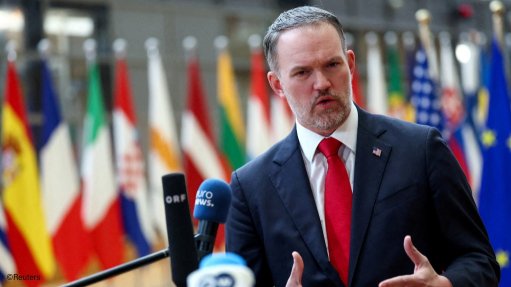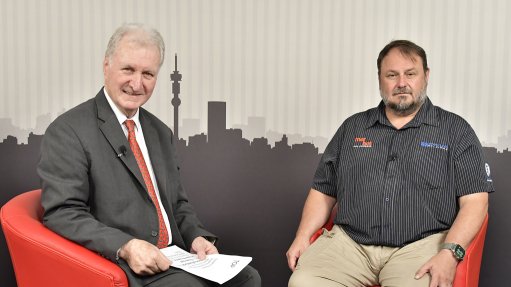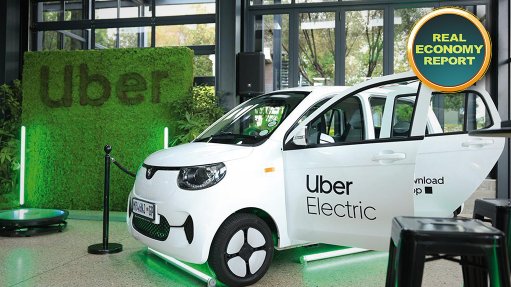Kusile power plant project, South Africa – update


Kusile power station flue gas desulphurisation plant
Photo by Donna Slater
Name of the Project
Kusile power plant project.
Location
Mpumalanga, South Africa.
Project Owner/s
State-owned power utility Eskom.
Project Description
The Kusile power station project, near the existing Kendal power station, in the Nkangala district of Mpumalanga, will comprise six units, each rated at an 800 MW installed capacity for a total capacity of 4 800 MW. Once completed, Kusile will be the fourth-largest coal-fired power station in the world.
The Kusile project will include a power station precinct, power station buildings, administrative buildings (control buildings and buildings for medical and security purposes), roads and a high-voltage yard.
The associated infrastructure will include a coal stockyard, coal and ash conveyors, temporary and permanent water-supply pipelines, temporary electricity supply during construction, water and wastewater treatment facilities, ash disposal systems, a railway line, limestone offloading facilities, access roads (including haul roads) and dams for water storage, as well as a railway siding and railway line to transport the limestone supply (sorbent).
The power station will be the first in South Africa to install wet flue-gas desulphurisation (WFGD) – a state-of-the-art technology used to remove oxides of sulphur, such as sulphur dioxide, from exhaust flue gases in power plants that burn coal or oil.
This technology abates atmospheric emissions, in line with current international practice, to ensure compliance with air-quality standards, especially since the power station is located in a priority air-shed area.
The WFGD plant is a totally integrated chemical plant using limestone as feedstock and producing gypsum as a by-product.
Each supercritical tower boiler will be about 115 m high. The air-cooled condensers will be constructed on and supported by twenty 60-m-high concrete columns.
Potential Job Creation
A comprehensive exit and outreach strategy, which aims to gradually upskill and release local labour to the job market, has been formalised in partnership with key stakeholders. This allows for project stability amid the gradual demobilisation of workers once milestones are achieved, and mitigating the risk of local community disruptions.
Capital Expenditure
R233.4-billion.
Planned Start/End Date
Kusile Unit 1 achieved commercial operation on August 30, 2017.
Kusile Unit 2 achieved first synchronisation on March 24, 2018, and achieved full load in January 2019. Commercial operation was achieved on October 29, 2020.
Kusile Unit 3 achieved first synchronisation on April 14, 2019, eight months ahead of schedule. Commercial operation was achieved in March 2021.
Kusile Unit 4 was connected to the national grid for the first time on December 23, 2021, and was formally handed over to the generation division on May 31, 2022, following five months of testing and optimisation.
Latest Developments
Eskom is expecting to operate temporary stacks on the three Kusile units for about a year while permanent remediation works are carried out. The units have been inoperable since October 23, when the Unit 1 flue duct failed in a way that also compromised the flue ducts of Unit 2 and Unit 3.
The temporary stacks will bypass the FGD system.
Eskom is preparing to seek an exemption from the Department of Forestry, Fisheries and the Environment (DFFE) to allow its operating the units without using the air-pollution control system.
The DFFE told Engineering News in January that no formal exemption request had yet been received from the State-owned utility which, for its part, says the request will be submitted once the project scope and project details are finalised.
The DFFE also gave no indication as to how long it would take to consider the application, saying only that the “processes to be undertaken to consider the exemption request will be informed by the nature of the request from Eskom when the department is ultimately approached”.
Eskom has started making the case for progressing with the construction of the temporary stacks that bypass the FGD on the basis that the project will reduce the time it would otherwise take to return the units to service by about a year and would, thus, help to reduce the intensity of loadshedding.
“[We are] . . . anticipating running the temporary flues for a duration of approximately one year before the final solution will be ready,” Eskom said in response to emailed questions from Engineering News.
Should it secure the exemption, the first temporary stack construction will take about ten months from environmental authorisation, with stacks 2 and 3 becoming available at one-month intervals thereafter.
The temporary stacks will be designed, built and commissioned by Concor and preparatory work by Concor is reportedly already in progress.
Eskom has said it is unable to provide a cost estimate for the temporary stacks, stating that the exact costing will be confirmed only once the detailed designs are available.
The utility’s current “rough” cost estimate for the permanent remediation solution, which will be implemented in parallel to the temporary stacks, is R240-million and will be funded as an operational rather than a capital cost.
Therefore, Eskom insists that the estimated total cost to complete Kusile remains R233.4-billion – a figure that is said to include interest during construction.
Besides returning units 1, 2 and 3 to service, Eskom estimates that Unit 5, the commissioning of which was delayed by a gas-heater fire, also in October 2022, will be synchronised to the grid in July or August 2023, while Unit 6 will be completed by May 2024.
Currently, only Unit 4 is operational at Kusile, where there have also been serious boiler design problems and where Eskom has been struggling to operate the FGD units, which are unique to its coal fleet in South Africa.
The boiler design problems have been attributed to “creative tendering”, while it has been shown that the Kusile project, including during evidence presented at the Zondo Commission, has been seriously affected by corruption.
The Unit 1 flue duct failure has been attributed partly to the boiler design, which is
16 m too short, and has resulted in high exhaust gas temperatures and air velocities, as well as a high build-up of slurry material.
This, together with inadequate monitoring of the flue, caused the bend on the Unit 1 flue to collapse because of excessive weight imposed on the common support platform structure.
The adjacent Unit 2 and 3 flue duct bends, located inside the same 220 m chimney as the Unit 1 flue, were also compromised, consequently rendering all three units inoperable. The chimney functions as a windshield for the three flues.
“With the information that is currently available, the internals of the windshield will need to be made safe [and] this will be done by retaining the concrete windshield and repairing the flues and the 151 m level platform,” Eskom has said.
“The lobsters for all units will likely need to be replaced and the platform at the 55 m level will need to be rebuilt.
“It is anticipated that the entire process will take approximately 24 months.”
These remediation works, which will need to be conducted slowly to ensure that there is no catastrophic failure of the chimney, will be performed in parallel to the construction of the temporary stacks.
“Lessons learnt are being considered for future operations, including units 4, 5 and 6, and Eskom is . . . in negotiations with the original-equipment manufacturer for a technical support contract.”
Key Contracts, Suppliers and Consultants
Eskom, in partnership with Black & Veatch International (project management and engineering services); Ninham Shand Consulting Services (environmental-impact assessment, geotechnical investigation and traffic impact); AirShed Planning Professionals (air-quality impact); Jongens Keet Associates (noise impact); Strategic Environmental Focus, or SEF (visual impacts); Makecha Development Association (impacts on terrestrial fauna and flora); Golder Associates, through Ecosun (aquatic-ecosystem impact); Groundwater Consulting Services (groundwater impact); Ilitha Riscom (risk assessment); Northern Flagship Institution (archaeological impact); University of the Free State (impacts on agricultural potential); Urban-Econ (socioeconomic impacts); Seaton Thomson & Associates (planning implications); Mark Wood Environmental Consultants (process review); Mitsubishi Hitachi Power Systems Africa, or MHPSA, a subsidiary of Hitachi Power Europe, or HPE (boiler contract); Actom, formerly Alstom S&E Africa (main turbine area); ABB SA (C&I, including supply of medium-voltage switchgear and associated equipment); Mikropul, subcontracted by Alstom (axial-flow fans and auxiliary equipment for the turbine halls'ventilation); GE (EPC of six turbine islands, air-cooled condensers and WFGD); Alstom (WFGD); Murray & Roberts, or M&R (boiler construction contract); Roshcon, a subsidiary of Eskom (enabling civils, terracing construction and site services); Concrete Finishing Equipment (dust filters, and silo and environmental safety); Kusile Civil Works, or KCW, Joint Venture (JV), comprising Stefanutti Stocks, Basil Read, Group Five and WBHO Construction (main civil works); Siemens (generator transformers and electrical and auxiliary power); EsorFranki Geotechnical, formerly Franki Africa, and Stefanutti Stocks Geotechnical JV, under a subcontract to KCW JV (piling works for the turbine, boiler and air-cooled condensers); Concor Karrena JV (construction of chimney shells/structures); Tubular (engineering, supply and installation of FGD system); DSE Structural Engineers & Contractors, subcontracted by Genrec Engineering (fabrication of steel columns for boilers 1 to 3); Steel Services Direct, or SSD (steel, pipes and wax plants); GB Bearings (supplier of HSR horizontal bearing assemblies and profile bore bearings); Sulzer Pumps South Africa, subcontracted by Actom (supply of booster and boiler feed pumps); Steloy Castings, subcontracted by Sulzer Pumps South Africa (supply of chrome steel components for the pumps); Clyde Bergemann Power Group, subcontracted by MHPSA (supplier of sootblowers for boilers); Clyde Bergemann Africa (fly ash handling system); PD Naidoo & Associates, or PDNA, Industrial Projects (main water and wastewater treatment contractor); GE Water Engineered Systems, subcontracted by PDNA Industrial Projects (advanced water and wastewater treatment equipment); Bateman Africa (coal stockyard and terrace materials handling systems); Lesedi Nuclear Services (procurement and supply of the balance of plant equipment); Grinaker-LTA Metals & Minerals (supply and erection of piping, steelwork and free-issue chemicals); US Export-Import Bank, or Ex-Im Bank (loan finance); TBD (railroad construction and combustion water terrace construction phases 1 and 2); Zest WEG Group (auxiliary transformers); Aberdare Cables, a Powertech company within the JSE-listed Altron Group (cables); Konecranes (heavy duty cranes); Energy Engineered Products (supply of valves); and Turnmill Proquip Engineering (material for boiler ducting).
Contact Details for Project Information
Eskom media desk, email mediadesk@eskom.co.za.
Article Enquiry
Email Article
Save Article
To advertise email advertising@creamermedia.co.za or click here
Comments
Press Office
Announcements
What's On
Subscribe to improve your user experience...
Option 1 (equivalent of R125 a month):
Receive a weekly copy of Creamer Media's Engineering News & Mining Weekly magazine
(print copy for those in South Africa and e-magazine for those outside of South Africa)
Receive daily email newsletters
Access to full search results
Access archive of magazine back copies
Access to Projects in Progress
Access to ONE Research Report of your choice in PDF format
Option 2 (equivalent of R375 a month):
All benefits from Option 1
PLUS
Access to Creamer Media's Research Channel Africa for ALL Research Reports, in PDF format, on various industrial and mining sectors
including Electricity; Water; Energy Transition; Hydrogen; Roads, Rail and Ports; Coal; Gold; Platinum; Battery Metals; etc.
Already a subscriber?
Forgotten your password?
Receive weekly copy of Creamer Media's Engineering News & Mining Weekly magazine (print copy for those in South Africa and e-magazine for those outside of South Africa)
➕
Recieve daily email newsletters
➕
Access to full search results
➕
Access archive of magazine back copies
➕
Access to Projects in Progress
➕
Access to ONE Research Report of your choice in PDF format
RESEARCH CHANNEL AFRICA
R4500 (equivalent of R375 a month)
SUBSCRIBEAll benefits from Option 1
➕
Access to Creamer Media's Research Channel Africa for ALL Research Reports on various industrial and mining sectors, in PDF format, including on:
Electricity
➕
Water
➕
Energy Transition
➕
Hydrogen
➕
Roads, Rail and Ports
➕
Coal
➕
Gold
➕
Platinum
➕
Battery Metals
➕
etc.
Receive all benefits from Option 1 or Option 2 delivered to numerous people at your company
➕
Multiple User names and Passwords for simultaneous log-ins
➕
Intranet integration access to all in your organisation



















